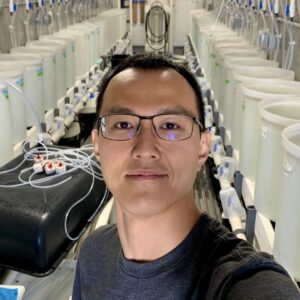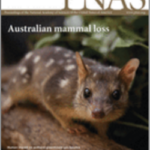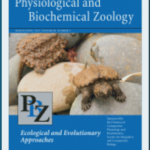
About Me
I am a senior research scientist in Marine and Environmental Biology. My research integrates marine science, physiology and biochemistry, and evolutionary biology. By taking an experimental approach, I study the adaptive significance of biological variation in growth and resilience to environmental change. I am also interested in applying my research findings to the aquaculture industry to improve growth and survival of marine shellfish in different environmental conditions.
 Macromolecule synthesis predicts marine larval growth
Macromolecule synthesis predicts marine larval growth
Protein turnover is a universal biological process that consumes the majority of cellular energy. In this study, experimental breeding of pedigreed broodstock produced growth contrasts that varied 400% between genotypes reared at the same environment. Fast growth was marked by high protein synthetic ability, however, with substantial metabolic tradeoffs. Fast growers had less energy available for stress response and will likely be the ‘losers’ to environmental change. In this paper, we also put forward an ATP allocation model that, for the first time, explains more than 80% of ATP usage by an animal.
 Endogenous variation in ion transport physiology
Endogenous variation in ion transport physiology
Ion transport by the sodium pump is a fundamental house-keeping physiology across the animal kingdom. Among pedigreed families, variation in rates and costs of ion transport is substantial. Such a variation in rates allows for prediction of larval growth and potentially survival of larval forms of different genotypes.
 Sublethal stress induces major changes in energy allocation
Sublethal stress induces major changes in energy allocation
Seawater acidification alters the allocation of ATP toward cellular maintenance functions, in the absence of changes in growth or metabolic rate in larval sea urchins. The re-allocation of ATP will impact metabolic energy available for other essential cellular functions.
 Genetic setting of nutrient transport physiology
Genetic setting of nutrient transport physiology
By using experimental crosses of genetic lines, faster-growing families of larval oyster show higher amino transport capacity than slow-growing families. This enhanced capacity of nutrient acquisition from seawater may serve as a biomarker to predict growth potential.
